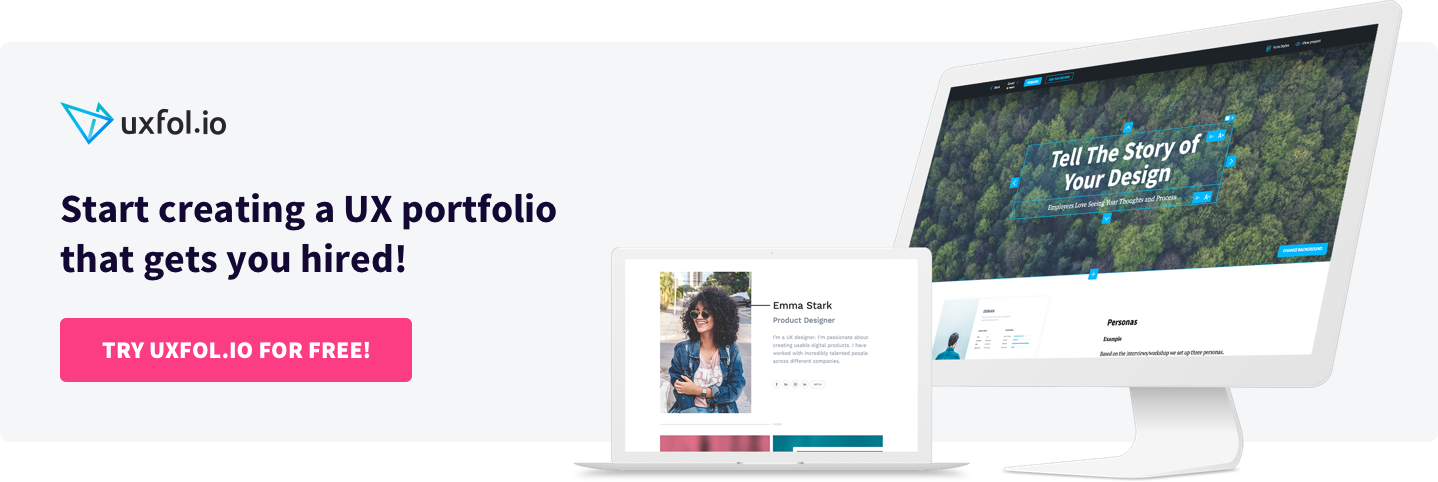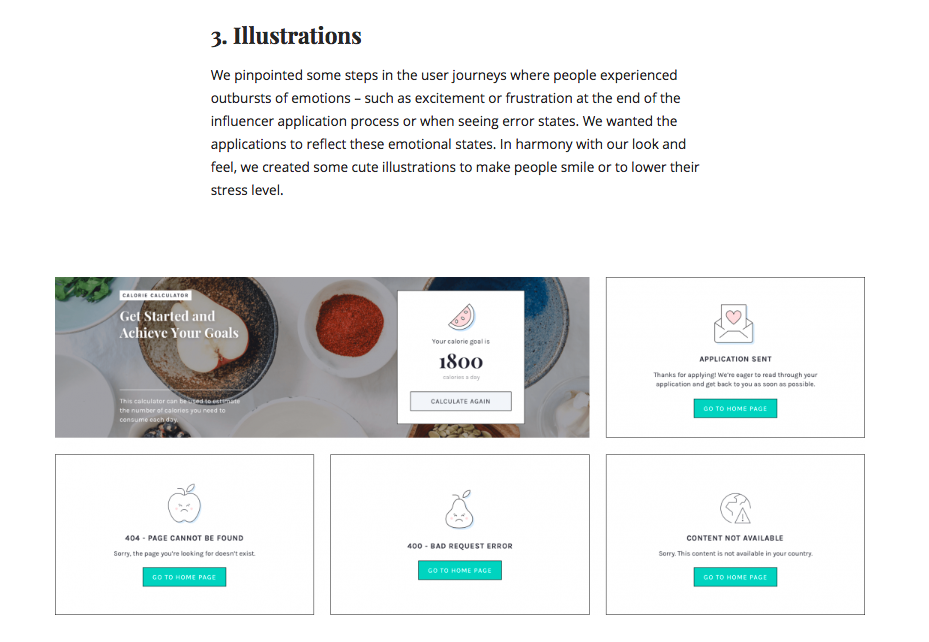In UXstudio, not a day goes by without fellow professionals who would like to work with us sending applications. In our own experience, a good UX design portfolio comes around as rare as a white crow. But don’t worry, it’s not brain surgery at all. We believe knowing your audience and designing for them plays a key role. Stand out from the crowd and impress your future employer to greenlight your dream job. We collected 10 do’s and don’t’s to get the most out of your UX design portfolio.
Demonstrate your problem-solving skills
Do:
Ultimately, anyone hiring a UX designer is not searching for someone who can only design some nice UI screens but for someone who can solve the users’ problems. It involves finding the users’ needs and figuring out the solution to their problems. When presenting different pieces of work in your UX portfolio, make sure to tell a clear story which identifies the actual problem you faced and shows how you managed to solve it. Tell it in a truly interesting way to make it enjoyable: apply UX storytelling when presenting your work.
Don’t:
Don’t hog all the credit. Unless you researched, designed and built every last detail, don’t forget to share the credit. Sharing the glory shows a good team player. Present the role you took during the project and your contribution to the team’s performance and hopefully, success.
Display your design process and design decisions
Do:
As a UX designer, have the right process to follow in order to succeed. We find writing UX case studies the best format to show your design process. As you describe the problem and eventual solution, walk people through the process taken to get there. Talk about any user research or competitive analysis you performed, demonstrate your understanding of both product and user requirements, show the wireframes you sketched, etc. Tell the readers about your understanding of the UX design toolkit and ability to apply the right product design process steps and tools to solve the users’ problems.
Don’t:
While walking readers through your process, don’t forget to do so in the most understandable way possible. Readers should be able to follow your way of thinking. Don’t bounce back and forth in your design story.
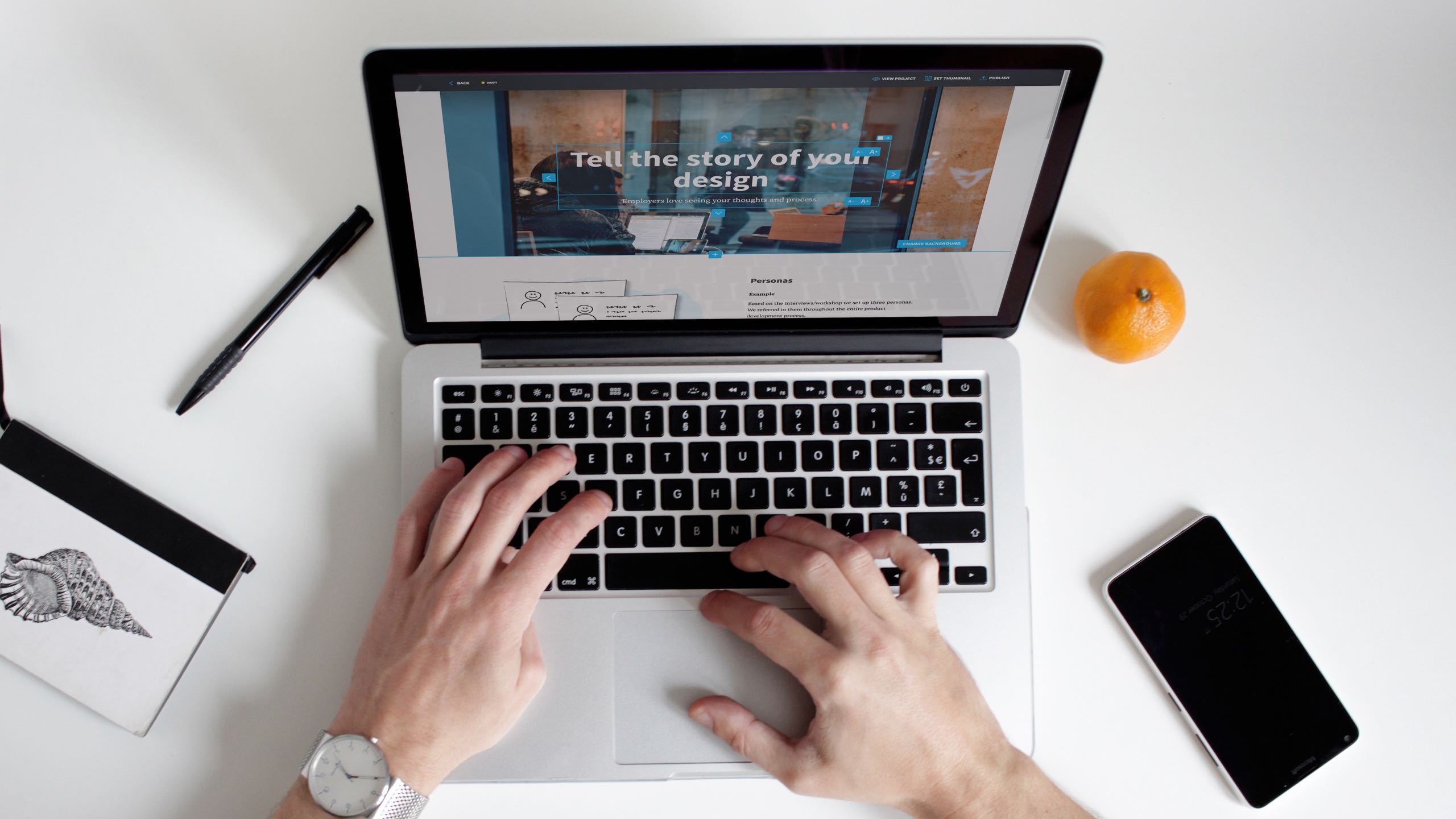
Keep the design of your portfolio simple but eye-catching
Do:
As recruiters spend only a couple of minutes looking through your work, first impressions really count. Adding nice project thumbnails to wow your audience right from the beginning so they’ll want to dig deeper to check the details. Showing your visual design skills either in a UX or a UI designer portfolio is impotant: add some nice UI screens when presenting your process behind these designs.
Don’t:
Don’t let the design of your portfolio site distract. Sticking to a simple design lets the quality of your work speak for itself. Make it functional as it aims mainly to support your work. Even with confidence in your abilities and wishes to showcase your UX design skills, do it by presenting your design work of your project but not your portfolio. Nothing beats simplicity.
Show the results of your work
Do:
If possible, explain how your work affected the company’s performance and the product’s success. If you have some metrics, present these results in a detailed way as it serves as a good measure of success. Also, write about the users’ feedback and mainly about how the product solved the users’ problems.
Even a project that didn’t meet your or your client’s expectations may prove worth sharing. In overall, sharing some results means you really cared about the measurement of your work.
Don’t:
Share your successes, but share your failures, too. Sharing what you’ve learned shows your openness to learning, your humanity and humility. Perfect projects or portfolios don’t exist, but you can always learn from them. So if you present some failures, write about the possible solutions you might follow in the future. It always presents a nice opportunity to learn from one’s mistakes.
Dig into details
Do:
Highlight something memorable for the readers. Pick your favorite small details and explain them in detail. Doing so can help readers focus on some parts they might otherwise miss when looking at the big picture. Knowing that your visitors may take only a few minutes, think about what you want them to see.
Don’t:
In the meantime, don’t get lost in details. When it comes to UX design portfolio, expecting the readers staying long without valuable context is probably not a good strategy. Describe your design process and solutions with just enough details, make it easily understandable, don’t make it too complex. Your portfolio should be as thoroughly considered as everything else you create.
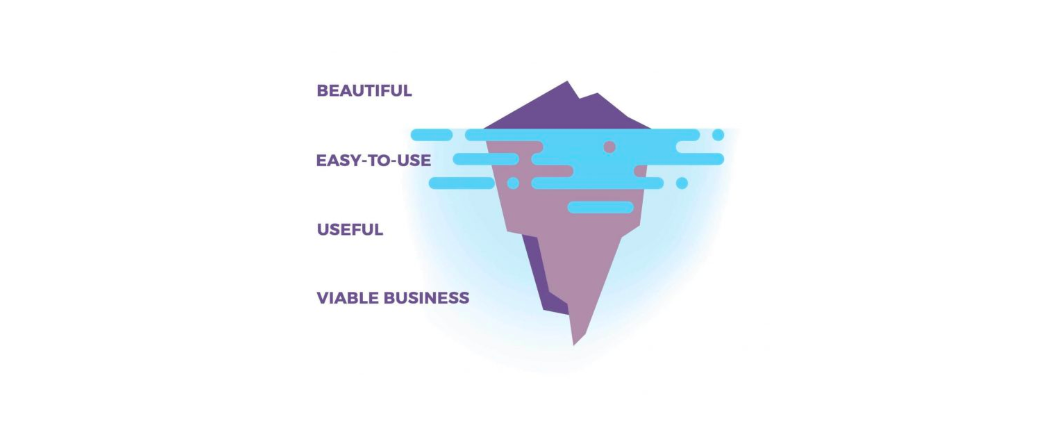
Share photos and sketches of your process
Do:
Make sure to document your processes, sketches and any other phases of your work. We can’t emphasize enough the importance of telling your design’s story. Collecting these files when doing the actual work comes much easier so you can find everything in one folder when you decide to put it into your portfolio.
Don’t:
Don’t focus only on the visuals and rely on them to do the talking. Make sure you demonstrate your consideration of usability details even when showcasing UI work or any details of your work.
Keep your UX design portfolio up to date
Do:
Portfolios should be living documents. Enthusiastic UX designers have up-to-date information in their portfolios. They always share their newest challenges and successes. Schedule time to add new projects to your portfolio. Either set recurring reminders (but not too often or too rarely) to work on your portfolio whenever you have something new to add. Even better, make it part of your project post factum. Every time you finish a project, document it. If you do so right after finishing, you definitely won’t forget or leave out any important information.
Don’t:
Don’t emphasize quantity over quality. It’s better to have three to five projects in your UX design portfolio and showcase your work in detail than to have a bit of everything done to date. Others will judge you by your weakest work anyways, so think through what to add. Don’t use your portfolio as an archive of your entire work history.
Add links when possible
Do:
If you make your work public and online, add links to your projects so readers can see the actual product you worked on. Sometimes the work may change from your initial creation, but while your projects still match your intent, you can give your readers the opportunity to test them. Also, if they really want to see them, they will search for them anyway. Adding links to specific parts, details, pages or features of the product can do an even better job as you can guide your audience’s attention.
Also, do include a UX designer resume to give extra details to recruiters. And don’t forget to add your contact details.
Don’t:
Don’t share NDA projects, especially without password protection – don’t risk the potential legal issues. Also, admitting you would break a contract for personal gain doesn’t look good, either. Instead, add works you did on the side of your UX career: personal projects, non-profit work, or freelancing.
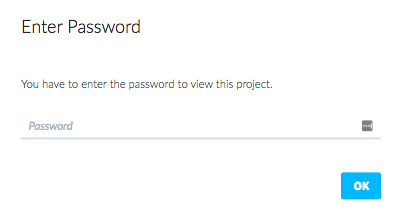
Seek feedback
Do:
As you would do with any project, get your product design portfolio in front of others as early and often as you can. Ask for feedback and iterate it if needed. A good UX case study structure is key. Does the content of the project or the project itself relate to your portfolio? Do you provide enough information about the project without overdoing it? Do you present the copywriting in a clearly understandable way? Have you given the content good structure? Does it tell a coherent story of your work? Does each section make sense in context with the others? Did you add nice visuals of your work’s phases to the sections? Does the style of these visuals remain consistent?
Don’t:
Don’t try to make your UX design portfolio perfect, as there is no such thing as perfection. Don’t overthink it, just start building it today. Don’t worry, you will have the chance to iterate on it anytime.
Present the kind of work you want to be hired for
Do:
Different portfolios can have different focuses. Most importantly, portray yourself as skilled in the areas for which your future employers are looking to hire. Maintain consistency. To enhance your UX career, always communicate and highlight the value you created for your clients and the effort you put into your work.
Don’t:
Don’t try to squeeze too much or mix in unimportant things. Add personal projects to your portfolio but provide only some specific and relevant ones when applying for a job. The more portfolio created, the better, as long as all your portfolios include the projects you would like your future employer to see. In UXfolio you can create different portfolios for each employer and include only the relevant work.
In conclusion:
Think of your UX design portfolio basically like a product you work on, and to be honest, probably the most important one. Treat your portfolio just like you would any other projects of yours: Plan it, test it and iterate on it. This will result in an outstanding UX design portfolio which your readers will remember. And don’t forget, future employers probably count among your readers.
If you’d like to build a UX portfolio that meets recruiters’ expectations, feel free to try out UXfolio – a UX portfolio builder tool we created following these points mentioned in the article. We hope you will like it! 🙂
PS: We aim to help UX professionals create awesome portfolios. Therefore, you can get constructive feedback – both community and expert reviews – to all the projects published on UXfolio.
Start to build your UX portfolio today.

